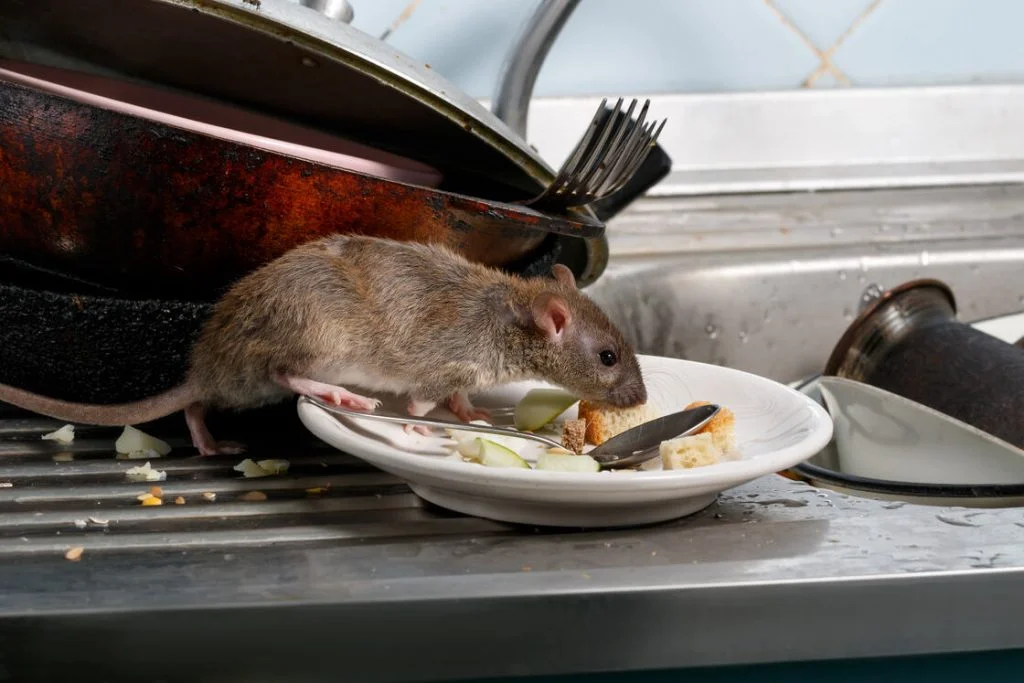In the intricate world of food processing, maintaining not only the quality but also the safety of products is paramount. A key challenge faced by facilities across Canada is rodent infestation, which poses serious health risks and can compromise product integrity. City Pest, your trusted pest control partner, comprehends the significance of effective rodent control in food processing facilities. In this comprehensive blog, we will delve deeper into practical steps to ensure a robust rodent pest control strategy, focusing particularly on Mice removal.
ALSO READ: A Complete Guide for Getting Rid of Ants in the Kitchen
1. Through Assessment and Inspection
Before embarking on any rodent control measures, a meticulous assessment of your food processing facility is imperative. City Pest’s experts meticulously identify potential entry points, nesting sites, and areas with heightened rodent activity. Utilizing advanced technology, such as infrared cameras and tracking tools, this step is foundational for developing a targeted and effective rodent control strategy.
2. Sealing Entry Points with Exclusion Techniques
Rodents, particularly mice, are notorious for squeezing through the tiniest openings. Seal all potential entry points meticulously, including gaps in walls, doors, and windows. City Pest employs exclusion techniques involving the use of durable materials and innovative solutions like rodent-proof barriers and electronic entry detectors. This ensures that rodents cannot find their way into your facility, offering a proactive and long-lasting rodent control solution.
3. Strict Sanitation Practices
A clean and sanitary environment is a formidable deterrent for rodents. City Pest recommends implementing stringent sanitation practices within your food processing facility. This encompasses proper waste management, prompt cleaning of spills, and ensuring that all food items are stored in rodent-proof containers. By eliminating potential food sources, you create an inhospitable environment for rodents, an essential step in effective rodent pest control.
4. Advanced Monitoring and Trapping Techniques
City Pest goes beyond traditional methods, employing cutting-edge monitoring techniques to track rodent activity. Strategic placement of traps, both mechanical and electronic, is an integral aspect of our rodent control strategy. This includes the use of motion-activated cameras to identify high-traffic areas and employing smart traps that notify our experts in real time when rodents are captured. This step aids in identifying the extent of the infestation, allowing for targeted mice rodent control from your facility without compromising the integrity of your products.
5. Judicious Use of Rodenticides
In instances of severe infestations, City Pest may recommend the judicious use of rodenticides. Our pest control experts are not only well-versed in selecting the most suitable rodenticides but also in applying them safely and in compliance with all relevant regulations. This step is executed with the utmost care, ensuring the safety of your staff and the integrity of your products. City Pest also prioritizes the use of eco-friendly and low-toxicity rodenticides to minimize environmental impact.
6. Regular Maintenance and Follow-up Inspections
Effective rodent control is an ongoing process. City Pest emphasizes the importance of regular maintenance and follow-up inspections to ensure that the implemented measures remain effective. Continuous monitoring allows for the prompt identification and resolution of any emerging rodent issues, reinforcing the long-term success of your pest control strategy. Our experts conduct regular training sessions for your staff to educate them on spotting early signs of rodent activity and fostering a culture of proactive prevention.
7. Integrated Pest Management (IPM) Strategies
City Pest advocates for an Integrated Pest Management (IPM) approach, which combines biological, cultural, and mechanical controls along with chemical interventions. This holistic strategy ensures a sustainable and balanced approach to rodent control, addressing the root causes of infestations and minimizing the reliance on chemical solutions.
8. Employee Education and Training
City Pest recognizes the importance of involving your facility’s staff in the rodent control process. Regular training sessions are conducted to educate employees about the significance of maintaining a pest-free environment. Training includes proper waste disposal practices, identifying signs of rodent activity, and reporting procedures. Engaging your team in the process fosters a collective responsibility for maintaining a hygienic facility.
ALSO READ: What You Need To Know About Controlling Insects Both Indoors and Outside
Conclusion
Maintaining a rodent-free environment in your food processing facility demands a meticulous and multifaceted approach. City Pest, leveraging its expertise in rodent control, offers tailored solutions to safeguard your facility, products, and reputation. By diligently following the detailed steps outlined above, you can ensure not only a pest-free environment but also uphold the highest standards of hygiene in your food processing facility. Remember, proactive measures today can prevent significant challenges tomorrow. Trust City Pest for your rodent control needs in Canada, ensuring the resilience and integrity of your food processing operations.

